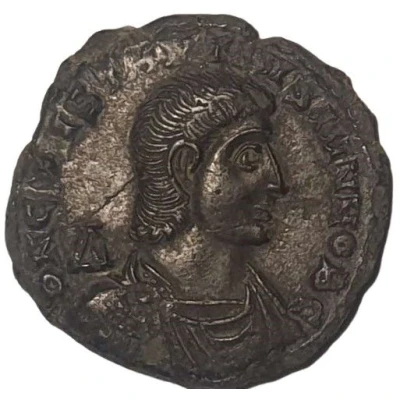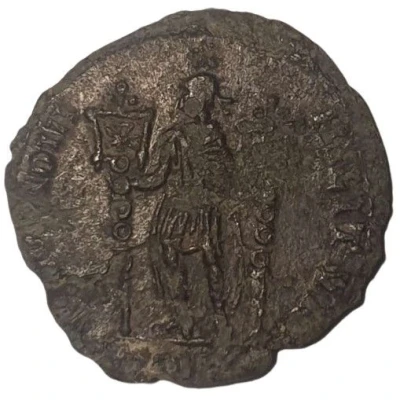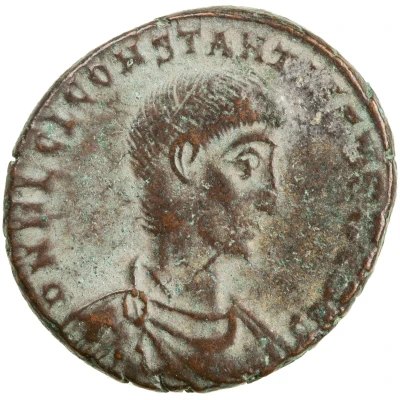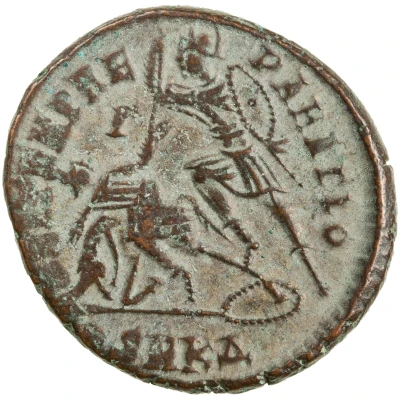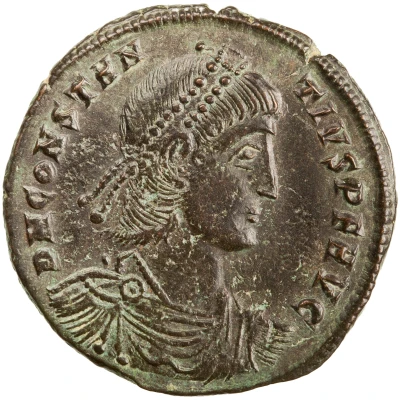
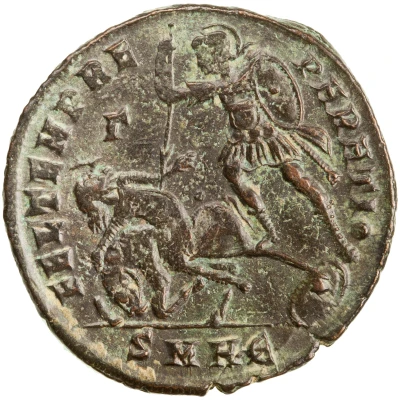

© American Numismatic Society (ANS)
Nummus - Constantius II Γ / FEL TEMP REPARATIO; Cyzicus
| Bronze | 4.9 g | 23.5 mm |
| Issuer | Rome › Roman Empire (27 BC - 395 AD) |
|---|---|
| Emperor | Constantius II (337-361) |
| Type | Standard circulation coin |
| Years | 351-354 |
| Value | Nummus (1⁄7200) |
| Currency | Solidus, Reform of Constantine (AD 310/324 – 395) |
| Composition | Bronze |
| Weight | 4.9 g |
| Diameter | 23.5 mm |
| Shape | Round (irregular) |
| Technique | Hammered |
| Orientation | Coin alignment ↑↓ |
| Demonetized | Yes |
| Updated | 2024-10-04 |
| Numista | N#23504 |
|---|---|
| Rarity index | 53% |
Reverse
Soldier standing left, holding shield on left arm, spearing with right hand a fallen horseman bare-headed and bearded, next to his horse.
Letter in left field.
Mint and officina mark in exergue.
Scripts: Latin, Greek
Lettering:
FEL TEMP REPARATIO
Γ
Unabridged legend: Felicitas Temporum Reparatio.
Translation: Return of happy times.
Edge
Plain
Interesting fact
The Nummus - Constantius II (Γ / FEL TEMP REPARATIO; Cyzicus) coin was part of a large-scale currency reform implemented by Emperor Constantius II in the 4th century AD. The reform aimed to address the inflation and economic instability of the Roman Empire by introducing a new standardized system of coinage. The Nummus coin was one of the new denominations introduced during this reform, and it was designed to be a more affordable alternative to the older, larger denomination coins. Despite its smaller size and value, the Nummus coin was still made of bronze, which was a significant improvement over the previous copper coins. This change in material helped to increase the durability and longevity of the coin, making it a more reliable and trustworthy form of currency.
